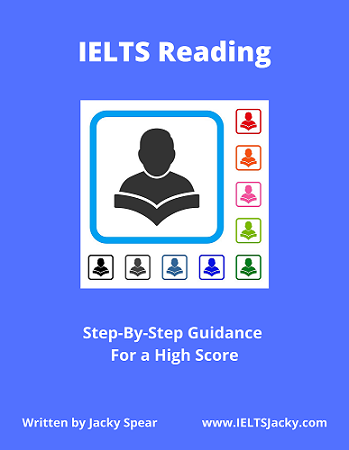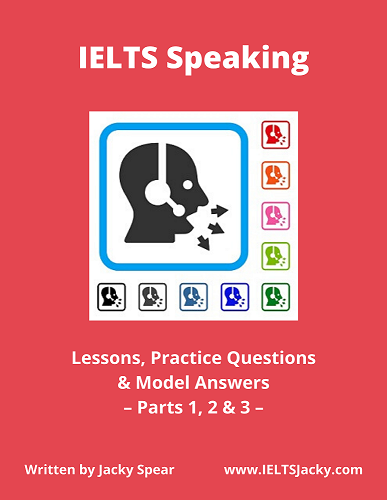How To Write an
IELTS Process Diagram Essay
An IELTS process diagram
question can contain a wide variety of different types of graphics. It could be a natural process such as the
water cycle, a manufacturing process or a diagram of a system.
Using these 5 steps will help you to write a high-scoring process diagram essay:
1) Analyse the question
2) Identify the main features
3) Write an introduction
4) Write an overview
5) Write the details paragraphs
In this lesson, we’re going to work through the 5 stages step-by-step as we answer a practice question.
Before we begin, here’s a model essay structure that you can use as a guideline for all IELTS Academic Task 1 questions.
Ideally, your essay should have 4 paragraphs:
Paragraph 1 – Introduction
Paragraph 2 – Overview
Paragraph 3 – 1st main feature
Paragraph 4 – 2nd main feature
We now have everything we need to begin planning and writing our IELTS process diagram essay.
Here’s our practice question:
The
diagrams below show a structure that is used to generate electricity from wave
power.
Summarise the information by selecting and reporting the main features, and make comparisons where relevant.
Write at least 150 words.
Generating Electricity From The Sea
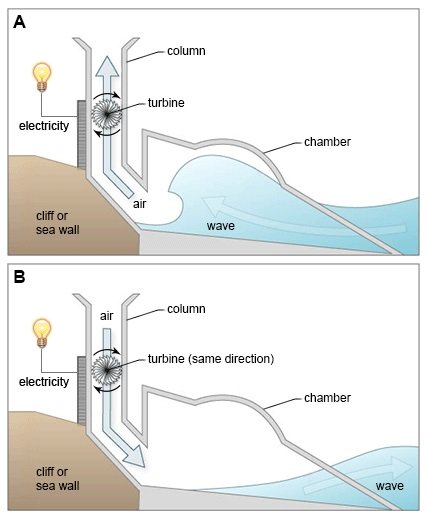
Source: Official
website IELTS Essentials
Step 1 – Analyse the question
The format of every Academic
Task 1 question is the same, with the instruction sentence (highlighted below)
identical in every question. Here is our practice question again.
The
diagrams below show a structure that is used to generate electricity from wave
power.
Summarise the information by selecting and reporting the main features, and make comparisons where relevant.
Every question consists of:
- Sentence 1 – A brief description of the graphic
- Sentence 2 – The instructions
- The graphic – diagram, chart, graph, table, etc.
Sentence 2 tells you what you have to do.
You must do 3 things:
1. Select the main features.
2. Write about the main features.
3. Compare the main features.
All three tasks refer to the ‘main features’ of the graphic. You do not have to write about everything. Just pick out 2 or 3 key features and you’ll have plenty to write about.
Step 2 – Identify the Main Features
The graphic in IELTS process
diagram questions should not be difficult to understand. There are not usually
any numbers to analyse as in other types of question, just a diagram to interpret
or, as in our practice question, two diagrams which each show part of the
process.
All you are looking for are the main features. These should be the easiest things to spot. There will be lots of information in the graphic to help you identify them, especially, titles, labels and captions.
Here are some useful questions to ask?
1)
Is it a linear or a cyclical process?
A linear process starts and finishes at different places. It will often involve the manufacture or creation of something, starting with the raw materials going in at one end and the finished product coming out the other end. An example of this can be seen in this diagram from a past IELTS process diagram question about the manufacture of bricks.
Linear process
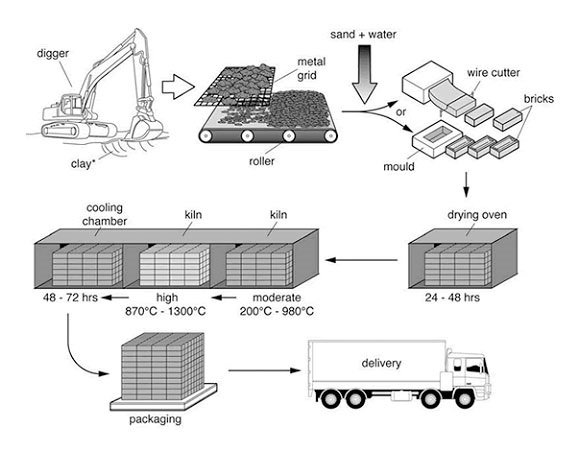
A cyclical process, on the other hand, is a process that goes back to the beginning and repeats over and over again, such as the life cycle of a frog or a butterfly.
Cyclical process
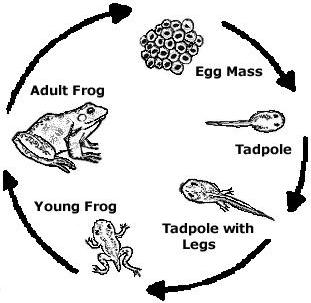
2) Where does the process start and end?
For a linear process this will usually be obvious. It may be harder to determine for a cyclical process so it’s important that you examine the graphic carefully to find out.
3) How many steps are there to the process?
If there are a lot, it can be helpful to number them from 1 to whatever number the final stage is.
4) Can the process be easily broken down into stages?
In the brick-making graphic, for example, there are three stages:
a) Creating the bricks from clay
b) Manufacturing the finished product by drying and firing
c) Packaging and delivery
In the life cycle graphic above, there are also three distinct stages as the frog passes through different stages of development – egg, juvenile, adult.
5) What are the raw materials? What is produced at the end of the process?
These questions obviously apply only to manufacturing processes.
For other types of process, it might be more appropriate to ask the following question.
6) What is the end result of the process?
This question is relevant for our practice IELTS process diagram question which shows a process that creates something using a particular structure. The end result is the production of electricity.
So, what main features stand out in our practice graphic? Here it is again.
Generating Electricity From The Sea

This graphic doesn’t contain very much detail. There are only two stages to the process:
Stage 1: Electricity is generated as the wave flows into the structure (Diagram A).
Stage 2: Electricity is also created as the receding wave draws air back down the column (Diagram B).
Other
diagrams are more complex and you have to go through them stage by
stage to work out what’s happening and then pick out just 2 or 3 main feature
to write about.
The key features you select will be the starting point for your essay. You will then go on to add more detail later. However, with just 20 minutes allowed for Task 1, and a requirement of only 150 words, you won't be able to include many details.
We’re now ready to begin writing our essay. Here’s a reminder of the 4 part structure we’re going to use.
Paragraph 1 – Introduction
Paragraph 2 – Overview
Paragraph 3 – 1st main feature
Paragraph 4 – 2nd main feature
Step 3 – Write an Introduction
In the introduction, you should simply paraphrase the question, that is, say the same thing in a different way. You can do this by using synonyms and changing the sentence structure. For example:
Question:
The diagrams below show a structure that is used to generate electricity from wave power.
Introduction (Paragraph 1):
The two diagrams illustrate a method of creating electricity from the force of waves using a specifically designed man-made construction.
This is all you need to do for the introduction.
Step 4 – Write an Overview (Paragraph 2)
In the second paragraph, you should give a general description of the diagram/s or process. The detail comes later in the essay.
State the information simply using synonyms where possible. No elaborate vocabulary or grammar structures are required, just the appropriate words and correct verb tenses.
For example:
Overview (Paragraph 2):
The structure, consisting of a wave chamber and a tall column containing a turbine, is erected on a steeply sloping coastal cliff or sea wall where it is subject to the movement of the ocean waves.
Step 5 – Write the 1st Detail Paragraph
Paragraphs 3 and 4 of your IELTS process diagram essay are where you include more detailed information. In paragraph 3, you should explain the first key feature in more detail.
For this question, we will expand on the first stage of the process. Here it is again:
Stage 1: Electricity is generated as the wave
flows into the structure (Diagram A).
And this is an example of what you could write:
Paragraph 3:
The first diagram shows how the incoming wave fills a large chamber and forces the air inside this space up the column and through the turbine. The pressure of the air rotates the turbine which generates a current of electricity. The process does not end there for the structure is able to continue producing power as the sea recedes as can be seen in the second diagram.
Step 6 – Write the 2nd Detail Paragraph
For the
fourth and final paragraph, you do the same thing for your remaining key
features or, for this question, the second stage of the process.
Here it is again:
Stage 2: Electricity is also created as the
receding wave draws air back down the column (Diagram B).
Here’s an example of what you could write:
Paragraph 4:
As the water now flows away from the structure, it draws air back down the column and downwards through the turbine in the same direction as the previous upward flow of air. The turbine continues to turn thus generating even more electricity.
Here are the four paragraphs brought together to create our finished essay.
Finished IELTS Process Diagram Essay
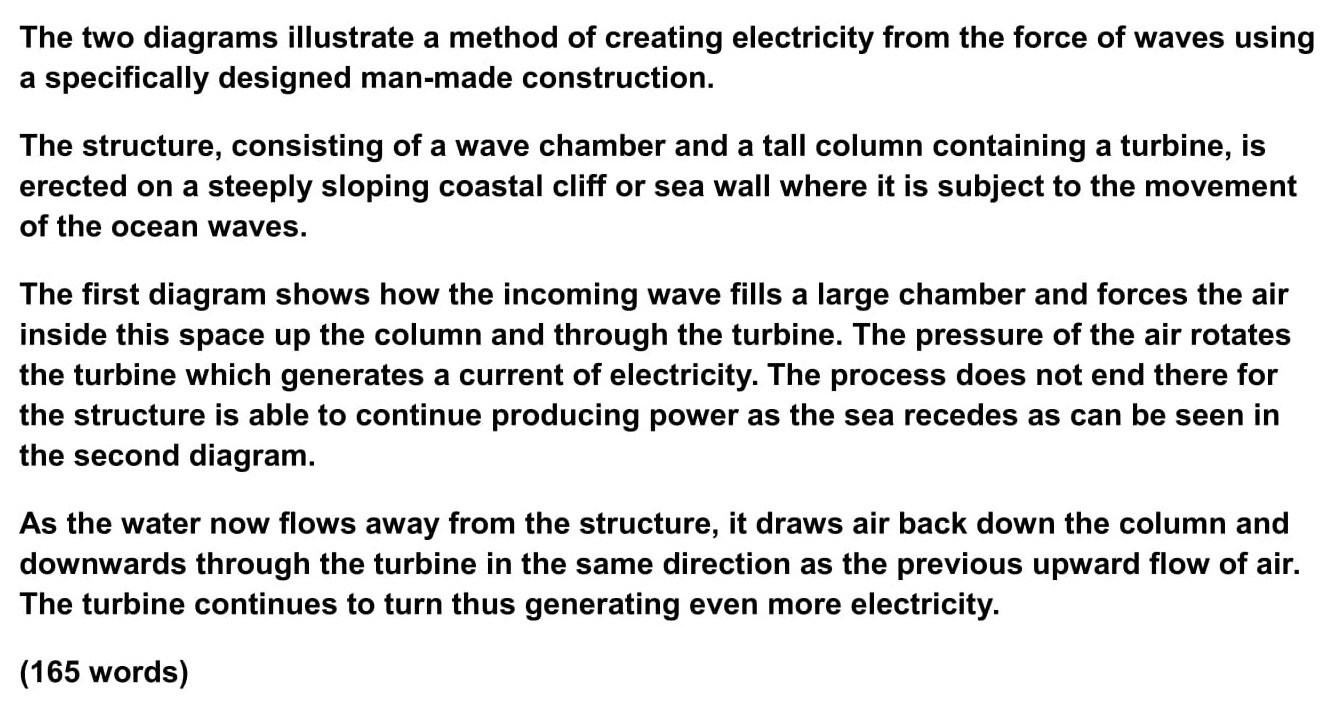
This sample IELTS process diagram essay is just over the minimum word limit so you can see that you don’t have space to include very much detail at all. That’s why it is essential to select just a couple of main features to write about.
Now use what you’ve learnt in this lesson to practice answering other IELTS process diagram questions. Start slowly at first and keep practicing until you can plan and write a complete essay in around 20 minutes.
Want to watch and listen to this lesson?
Click on this video.
Like this page?
IELTS Academic Writing Task 1 – All Lessons
IELTS Academic Writing – A summary of the test including important facts, test format & assessment.
Academic Writing Task 1 – The format, the 7 question types & sample questions, assessment & marking criteria. All the key information you need to know.
Understanding Task 1 Questions – How to quickly and easily analyse and understand IELTS Writing Task 2 questions.
How To Plan a Task 1 Essay – Discover 3 reasons why you must plan, the 4 simple steps of essay planning and learn a simple 4 part essay structure.
Vocabulary for Task 1 Essays – Learn key vocabulary for a high-scoring essay. Word lists & a downloadable PDF.
Grammar for Task 1 Essays – Essential grammar for Task 1 Academic essays including, verb tenses, key sentence structures, articles & prepositions.
The 7 Question Types:
Click the links below for a step-by-step lesson on each type of Task 1 question.




